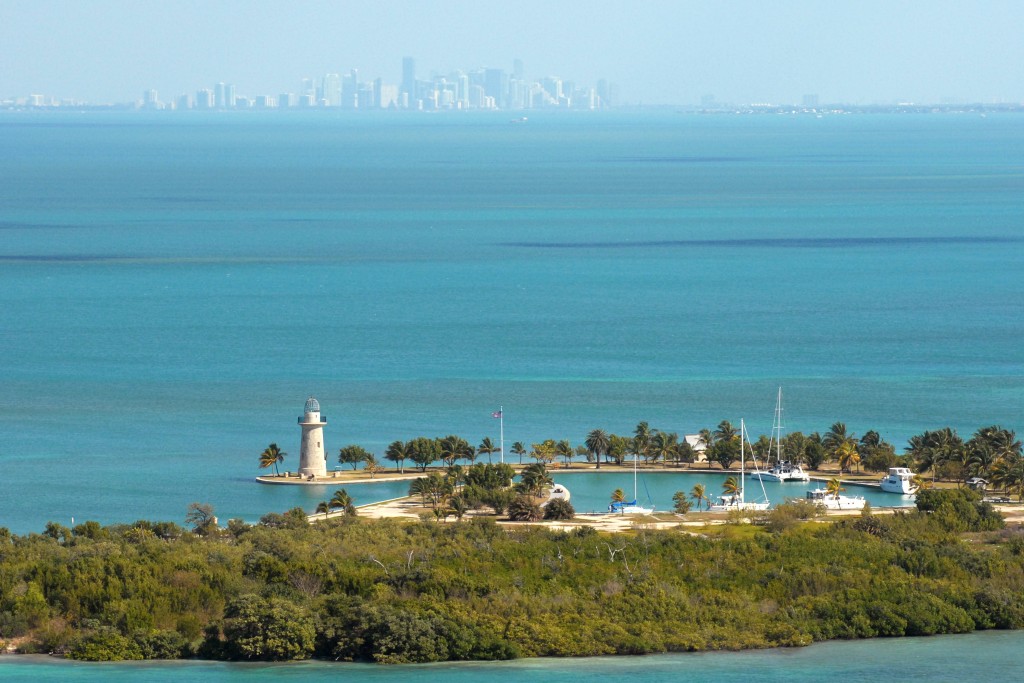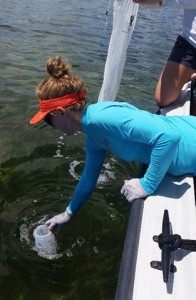
Ugly Algae Lurks in Biscayne Bay
This article was developed by Joan Browder, a leader of the NOAA Habitat Focus Area in Biscayne Bay.

Recent problems with algae in Florida’s coastal waters could hint at what’s coming to Biscayne Bay, a NOAA Habitat Focus Area near Miami. A bloom of algae would be unfortunate for this unique coastal ecosystem and regional economic engine. Currently, NOAA is funding projects and partnering with others to reduce or prevent new algal blooms in the bay.
Scientists Research Blooms to Prevent Doom
Determining what’s causing the algal blooms in Biscayne Bay is the first step in reducing their threat. What types of materials, when carried down canals, release nutrients that fertilize the algae, and where do they come from? How can they be eliminated? This NOAA Habitat Focus Area is collaborating with local governments in water quality studies and funding citizen scientists in the Water Watch![]() program (sponsored by Florida Sea Grant and Miami-Dade County) to help monitor concentrations of nutrients and water quality indicators in canals that reach the bay.
program (sponsored by Florida Sea Grant and Miami-Dade County) to help monitor concentrations of nutrients and water quality indicators in canals that reach the bay.
Listening to Seaweed
Another Habitat Focus Area project is looking for warning signs that an algal bloom is about to begin. NOAA and Florida International University scientists are squeezing information out of algae, which range in size from visible seaweeds (macroalgae) to infinitesimally small diatoms that must be viewed under a microscope to be identified.
Because different types of algae prefer different water conditions, the composition of algal communities may help scientists predict water quality and future blooms, helping to better pinpoint what triggered the bloom and possibly even arrest the bloom before it spreads. Diatoms are especially good water quality indicators.
Blooming Maps
A mapping project, funded through a grant to nonprofit Miami Waterkeeper, is packing all available spatial data for the Biscayne Bay Habitat Focus Area into a geographic information system (GIS) database for sharing online. Led by Maria Estevanez of the University of Miami, it will allow users to determine sites where blooms are more likely to occur and watch for early signs of them.
Bottom Lines & Sinkers
Also funded by NOAA through Miami Waterkeeper, the University of Miami economist Manoj Shivlani is addressing the question: “How much money is lost when Biscayne Bay blooms?” He is studying the bay’s value to anglers, boaters, and other groups—like restaurant, tourism, and real estate businesses—that profit from the bay without even getting into or onto the water. His project will identify hotspots where future blooms may be most devastating to the local economy. Understanding potential losses will help local leaders understand the threat of runaway algae and do their part to stop it.

